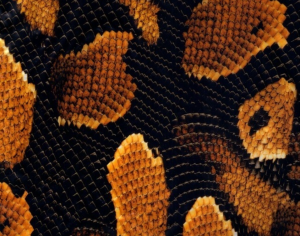
Specifies any terms which have not been overridden by this Seller's stated policy.
Leopard kills yellow boa constrictor full#
An email/text/message with the photo of the animal must be sent within one hour of arrival and signature for a full refund. Do not allow a child to handle a boa constrictor, especially unsupervised, as they can mishandle a boa and be accidentally strangled. Boas do not eat humans, but there are many incidents of them biting humans. If your animal is dead on arrival you must contact us immediately. While they are large and strong, they are not deadly snakes. All animals have a live arrival guarantee (unless you are not present to receive the package on the first delivery attempt) and a 48 hour health guarantee. You must ship the animal in the exact same manner it was shipped to you.

The buyer must contact us by text or email within 3 days after purchase/delivery and it must be shipped back to us no later than the 7th day at the buyers expense. Hans bred the offspring of the first pairing back to their parents and to each other, producing more Leopard Boas. Later Hans proved the Leopard trait as inheritable. Understanding how a boa constrictors grip is deadly. Description The Leopard Boa ( Boa imperator) originated from a litter of what were believed to be normal Sonoran Desert Boas, produced by Hans Winner (Germany). If you receive an animal and are not happy with it, we will replace the snake or issue a refund. How the Boa Constrictor Kills ScienceTake The New York Times. We strongly recommend that you allow the animal to get acquainted with its new environment before feeding. Unlike the venomous coral snake, which does not occur in Kentucky, the kingsnakes red and yellow rings are always separated by black on the kingsnake. When threatened, they flatten their necks and strike low to the ground.All of our animals are sold with sex and genetics guaranteed as well as a 100% satisfaction and health guarantee. The venom also damages the blood and muscles, leading to renal failure.Īdult snakes are usually (but not always) banded, with ragged stripes varying in colour from pale yellow to black along a solid, muscular body that can grow to 2m. They are attracted to farms and outer suburban houses, where they hunt mice nocturnally and can easily be trodden on by unsuspecting victims in the darkness.īites are fatal if untreated, causing pain in the feet and neck, tingling, numbness and sweating, followed by breathing difficulties and paralysis. Mainland tiger snakes are responsible for the second-highest number of bites in Australia, as they inhabit highly populated areas along the east coast, including some metropolitan areas of Melbourne. Though it thrives in tropical rainforests, it also inhabits savannas, cane fields, and semiarid scrublands.

Its range is wide, from Argentina to northern Mexico.

Although all species are potentially dangerous, here’s our pick of the 10 most dangerous snakes in Australia – some of them highly venomous, some extremely nervous, some you’re just more likely to see slithering away in your backyard.įound: along the south-eastern coast of Australia, from New South Wales and Victoria to Tasmania and the far corner of South Australia Image credit: shutterstock Category: Animals & Nature boa constrictor, ( Boa constrictor ), large thick-bodied snake of the boa family, Boidae. So if you’re standing between a snake and its escape route, prepare for a fearsome display. “If their only escape route is past a human with a shovel, then they are likely to react in the only way they can.” Gestation lasts for 5 to 8 months depending on local temperatures. It's the largest snake in Africa and can grow to be 20 feet long. Their venom is used to subdue prey that would otherwise be impossible for a snake to eat,” says Dion Wedd, curator of the Territory Wildlife Park, NT. Boa constrictors generally breed during the dry season, usually from April to August, though the timing of the dry season varies across their range. Tiny is an African rock python, a species of snake with an especially formidable reputation. “Snakes don’t perceive humans as food and they don’t aggressively bite things out of malice. Most snakes would rather slither away from humans than fight them. Most bites occur when people are trying to kill a snake or show off.” “Snake bites are very, very rare and often the fault of the person being bitten.

“This is in contrast to India, for example, where bites may reach one million a year, with over 50,000 deaths,” says Associate Professor Bryan Fry, a herpetologist and venom expert at the University of Queensland.


 0 kommentar(er)
0 kommentar(er)
